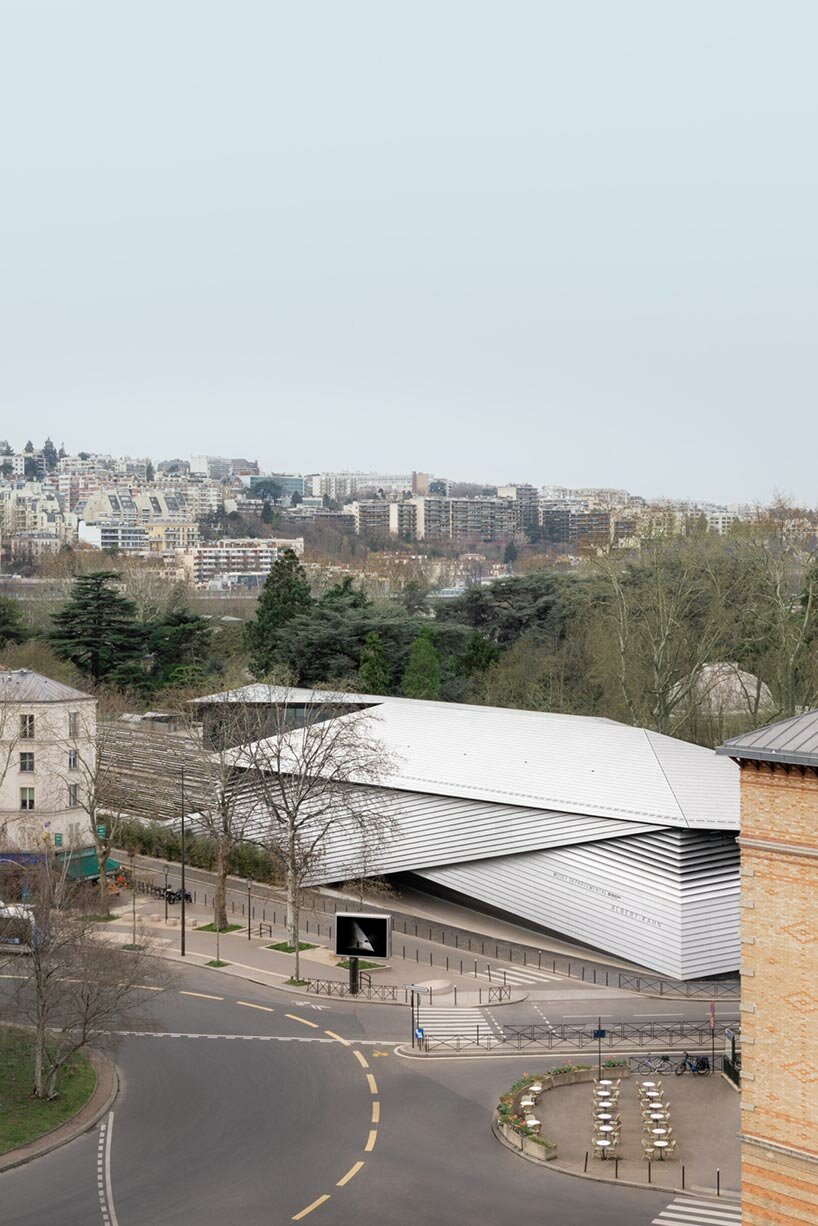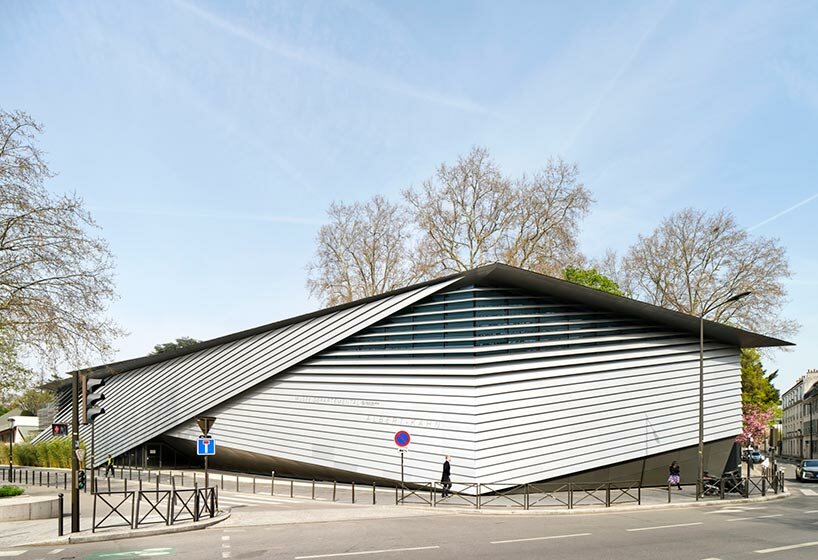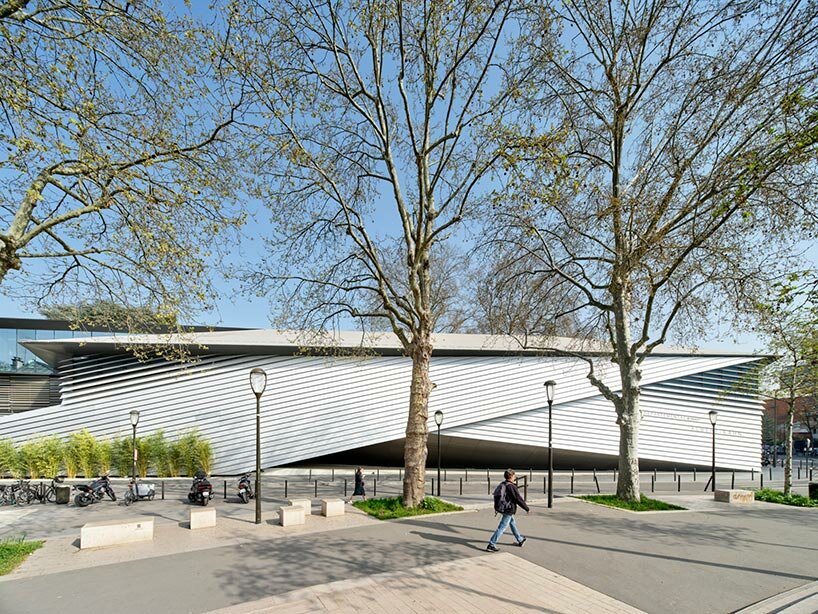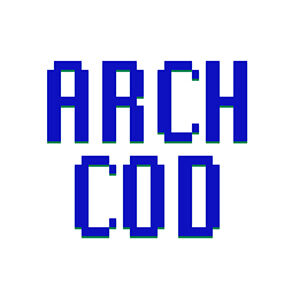kengo kuma’s irregular aluminum-clad facade invites visitors to albert kahn museum in france
Albert-Kahn art museum by kengo kuma
On the outskirts of Paris, the new Albert-Kahn art museum has opened its door to the public following the rehabilitation work and realization of a new building by the renowned architect Kengo Kuma. An envelope made from irregularly placed aluminum strips catches passersby’s attention from afar and endows the spaces with a play of light and shadow. The uneven aluminum roof that tops the structure reflects the nuances of the sky and welcomes visitors to discover the vast Kahn collections in a unique architecture of 2300 sqm.
The final design reveals a strong conceptual element that sees a reinterpretation of ‘Engawa’, a traditional physical medium of Japanese architecture. The meaning of Engawa is ‘in-between space’, and describes a filter between the inside and the outside. Thus, the design team sought to blend architecture and landscape, creating a seamless symbiosis between the display space and tame nature — an intention that is reinforced by lush gardens that pierce the building.  image ©︎ Think Utopia
image ©︎ Think Utopia
an effortless connection between culture and nature
Located on the south side of the Bois de Boulogne, the museum was founded by Albert Kahn (1840-1940), a trading merchant who captured scenes from his travels around the world in 72,000 color photographs and 183,000 meters of film; with these archives being on display on the central part of the collection. Albert Kahn had a profound love for nature and a dream of producing gardens from the five continents of the world, generating a natural setting of how different cultures could harmoniously coexist. Thus, the Japanese architect sought to form a design where both architecture and nature collaborate. Interacting with each other, wood, bamboo, and metal dominate the building and create a poetic sculpture that seems to change its character as visitors meander through its body.
‘The envelope on the city side is mainly made from aluminium, and the envelope on the garden side is mainly made from wood, and at times these two materials are mixed in a gradational manner. This gives the building a biological skin that gently adapts to different environments while interacting with them,’ explains the team.
 image ©︎Michel Denance | aluminium strips unfold diagonally, shaping an outstanding facade
image ©︎Michel Denance | aluminium strips unfold diagonally, shaping an outstanding facade
‘The display space was designed in an extended linear sequence from the paths through this garden. A screen made from aluminum and wood is inserted between the path and exterior environment while it continues to meander horizontally and vertically, controlling the relationship between the two,’ mentioned the architects. image ©︎Michel Denance | creating a bond between culture and nature
image ©︎Michel Denance | creating a bond between culture and nature


